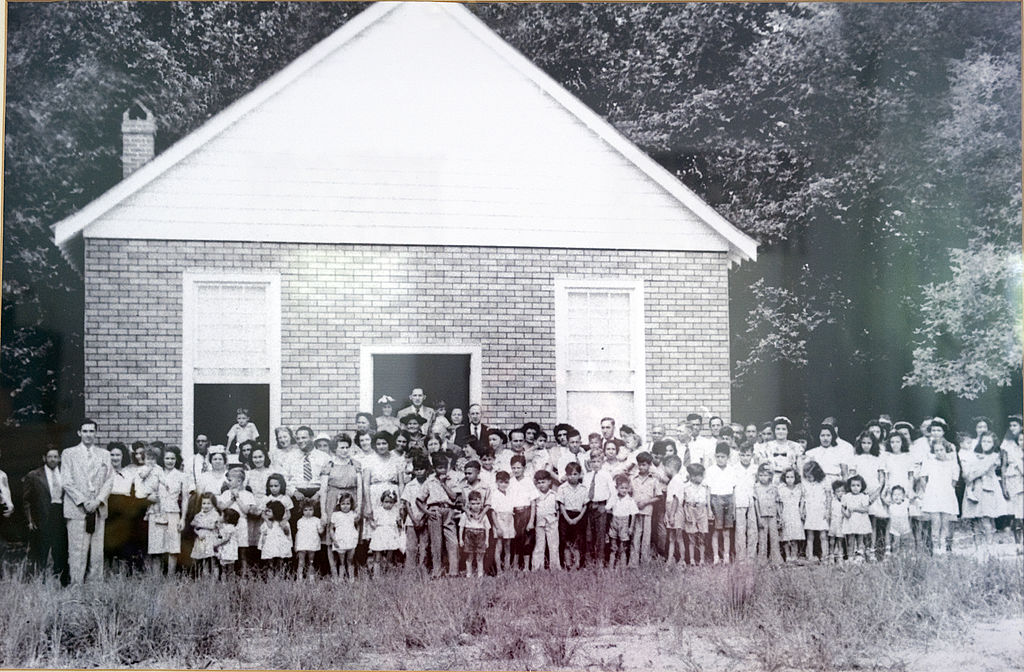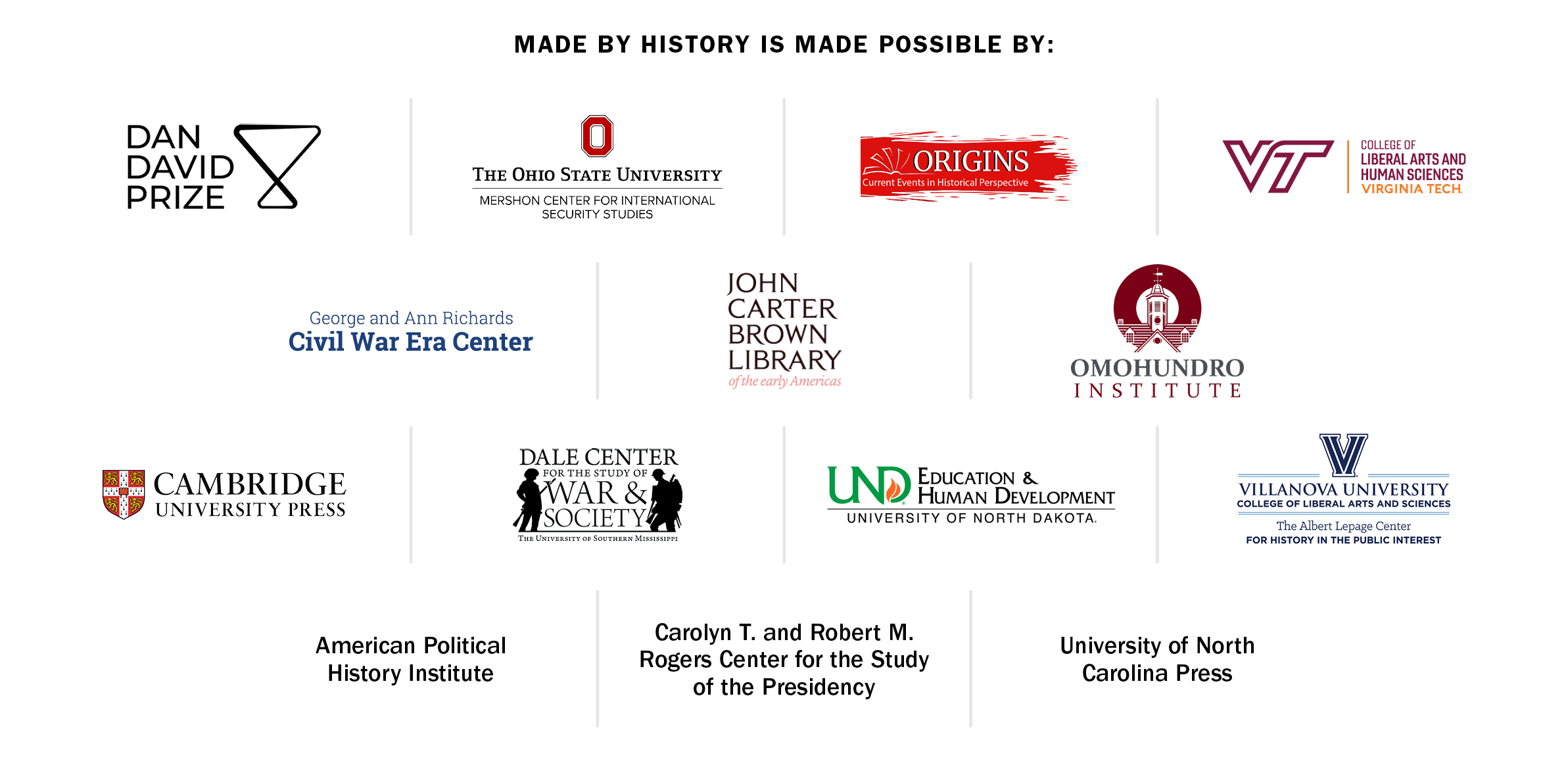
On March 20, 1924, the Commonwealth of Virginia enacted the nation’s cruelest, most draconian, segregation law. Designed to preserve white racial “purity,” the legislation became a model for states across the Jim Crow South and beyond.
In the halls of Richmond’s capitol building, lawmakers congratulated themselves on passing the Act to Preserve Racial Integrity, popularly known as the Racial Integrity Act. The Act made it a felony to falsify the racial identity of an individual on birth, death, or marriage certificates, and banned marriages between whites and nonwhites. Both offenses carried a sentence of one year in jail.
Some white Richmonders, though, weren’t satisfied. They worried about a loophole in the law that would dilute the purity of white “blood.” Leading white supremacists had wanted the Racial Integrity Act to solidify Virginia’s black-white racial binary. To do so, they called for the Act to erase the presence of Native people. In the coming decades, some used the Act to do just this, engaging in a form of “bureaucratic genocide” to re-cast Native people as Black, rendering them less visible in the historical record. The legacies of these policies endure to this day.
Virginia’s Racial Integrity Act belongs to a settler colonial tradition extending back to the early 1600s. In 1630, Hugh Davis, a white man, received a public whipping for “defiling his body by lying with a Negro.” Over the ensuing decades, similar cases prompted Maryland (1661) and Virginia (in 1662 and 1691) to pass stricter laws against interracial marriage and cohabitation.
How to define the progeny of interracial sex and marriage continued to vex lawmakers throughout the 18th century. In 1785, Virginia’s General Assembly passed a law that held “every person who shall have one-fourth part or more Negro blood shall be deemed a mulatto.” In 1910, new legislation redefined nonwhites as people with “one-sixteenth or more Negro blood.”
But as white racial anxieties surged in the early 1900s, these older racial definitions failed to satisfy increasingly vocal white racial extremists. They saw threats to white “blood” everywhere. Small but growing numbers of Asian immigrants sparked fears of a “yellow peril,” while “swarthy” multitudes from Southern and Eastern Europe caused growing concern among “old stock” Anglo-Americans.
Read More: How the ‘Great Replacement Theory' Has Fueled Racist Violence
But it was the enemies within who truly terrified the defenders of white racial purity. Some claimed to possess data proving that mixed-race (or “colored”) populations had grown by over 80% between 1890 and 1910. Was the American population becoming “mongrelized”? Would white Americans take the threat of “race suicide” seriously and act to stop the “rising tide of color”?
In Virginia, Anglo-Saxon Clubs, white supremacist social organizations formed in the 1920s to lobby for stronger anti-miscegenation laws, answered the call. Their racial ideology combined eugenics, or the belief that racial characteristics were inherited from one generation to the next, and longstanding racial prejudices against Black and Native Americans.
The future of white supremacy seemed secure when the Racial Integrity Act became law in 1924. But for people like John Powell, a leading figure in the Anglo-Saxon Clubs, a dangerous loophole remained.
While the Act clearly defined a white person as someone “who has no trace whatsoever of any blood other than Caucasian,” the “Pocahontas Clause” allowed for exceptions. The Clause was a concession to prominent Virginia families who claimed descent from the 1614 marriage of the Pamunkey teenager Pocahontas and the English planter John Rolfe.
Under the Clause, these “descendants” enjoyed a “white” legal status if they had less than 1/16th Native American ancestry.
For Virginia’s Anglo-Saxon Clubs, the Pocahontas Clause represented an open invitation for light-skinned African Americans to try to pass as Indians, or worse, white.
Walter Plecker agreed. Plecker despised the Pocahontas Clause and lobbied lawmakers for increasingly draconian segregation laws.
Between 1912 and 1946, Plecker served as the Commonwealth’s Registrar of Vital Statistics. In this position, Plecker turned to old census records to rewrite history and prove that people claiming “Indian blood” were actually “Negroes.” Under Plecker’s reign, Virginia reclassified hundreds of Virginia Indians—going back to the 1850s—from “Indian” to “Negro.”
For decades, Plecker bluffed, lied, and bullied local officials, midwives, educators, and married couples in his crusade to preserve white supremacy. Plecker scrutinized every birth, death, and marriage certificate filed in Virginia. He often insisted that people who claimed “Indian blood” refile paperwork as “Negro,” because he believed Virginia’s “real” Indians had “vanished.” If “remnants” remained, he often wrote, they were likely “Negroes in feathers.”
Plecker’s campaign to erase Virginia Indians took a particular interest in the Chickahominy. Plecker relied on rumors and innuendo to label the Chickahominy as “mulattoes,” and lampooned Edward Bradby, the Chickahominy Chief, as a “mulatto” and a fraud.
Read More: Without Indigenous History, There Is No U.S. History
Plecker also cast doubt on the indigeneity of the Pamunkey and Mattaponi. Since the 17th century, both communities lived on reservations east of Richmond. Still, Plecker believed that people claiming Pamunkey and Mattaponi ancestry were more Black than Native. When he learned that the Pamunkey had banned intermarriage with African Americans in 1887, he mocked the law, insisting it was “two hundred years too late.”
Plecker’s policing of the Racial Integrity Act created an atmosphere of fear among Virginia Indians. Across the Commonwealth, tightly knit kinship communities lived in fear of Plecker reclassifying them as Black. In other instances, Indigenous families were divided by local registrars when a family member presented with darker skin, prompting a categorization as “Negro.” Such people ran the risk of having their indigeneity defined out of existence by bureaucratic racism.
Plecker accelerated his campaign of bureaucratic genocide in the 1930s and 1940s by continuing to reclassify Native people as “Negro” in the files of the Registrar of Vital Statistics. In 1930, his work received a boost when a revised Racial Integrity Act made it easier for the Registrar of Vital Statistics to define out of existence Native people who had “one drop” of Black blood.
Typical of Plecker’s campaign of racial intimidation, he wrote to Mary F. Adkins, a midwife from Roxbury, Va., on Jan. 13, 1942. His letter cajoled and intimidated Mrs. Adkins, instructing her to stop issuing birth certificates because she was illiterate. Plecker believed that the birth certificates submitted by Adkins must be forgeries and refused to approve them. At the conclusion of his letter, he got to the real point for his objection, asserting, “this ‘Indian’ stuff has gone far enough, but I am not prepared just at present to say what will be done to make examples of some people.” Plecker’s letters often concluded with vague yet ominous threats.
Convinced of the righteousness of his cause, Plecker never gave up his fight for white racial purity in Virginia. Prior to his retirement in 1946, he expressed continued alarm at the presence of “mulattoes or colored people” in the Commonwealth. And he had nothing but contempt for a growing body of scholarship that emerged in the 1940s and highlighted the social benefits of multicultural and racial diversity. Such authors, Plecker insisted, were “freaks” who’d been misled by “Communistic sources” and “foreign college professors.”
Not until 1967, when the U.S. Supreme Court ruled anti-miscegenation laws unconstitutional in Loving v. Virginia, did the legal foundations for white supremacy in Virginia crumble. But, as Black and Native Virginians know, the “massive resistance” of whites to civil rights reforms and diversity initiatives between the 1950s and 1970s represented an ongoing reminder of the Racial Integrity Act’s enduring legacy.

Indeed, since the 1980s, the efforts of Virginia’s tribal communities to attain state and federal recognition routinely encountered roadblocks caused by the absence of archival records and documents altered by Plecker and his staff. In the case of the Pamunkey Indian Tribe, it took 25 years for the tribe to gain federal recognition through the Bureau of Indian Affairs. For a further six tribes and nations of Virginia, it took congressional legislation before they won federal recognition.
A century after the passage of the Racial Integrity Act, Virginia’s Indian communities haven’t forgotten the dark days of Jim Crow racism; they haven’t had that luxury. As Lynette Allston, Chief of the Nottoway Indian Tribe of Virginia, reminded us recently, the Racial Integrity Act engendered so much fear in tribal communities that it meant “Indigenous people lived so quietly, we had to live secretly.” This, Allston adds, was an “act of survival”—acts that make it possible for Virginia Indians to reclaim their identities and their sovereignty in the 21st century.
Ashley R. Craig is Community Engagement & Partnerships Specialist at Library of Virginia. Gregory D. Smithers is professor of history at Virginia Commonwealth University.
Made by History takes readers beyond the headlines with articles written and edited by professional historians. Learn more about Made by History at TIME here. Opinions expressed do not necessarily reflect the views of TIME editors.
More Must-Reads From TIME
- The 100 Most Influential People of 2024
- Coco Gauff Is Playing for Herself Now
- Scenes From Pro-Palestinian Encampments Across U.S. Universities
- 6 Compliments That Land Every Time
- If You're Dating Right Now , You're Brave: Column
- The AI That Could Heal a Divided Internet
- Fallout Is a Brilliant Model for the Future of Video Game Adaptations
- Want Weekly Recs on What to Watch, Read, and More? Sign Up for Worth Your Time
Write to Ashley R. Craig and Gregory D. Smithers / Made by History at madebyhistory@time.com
